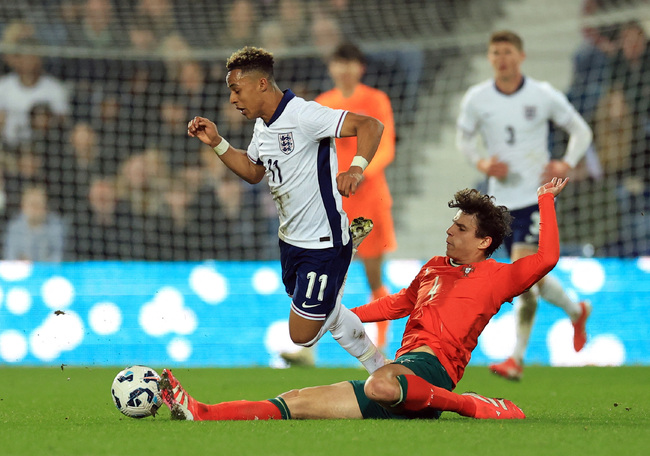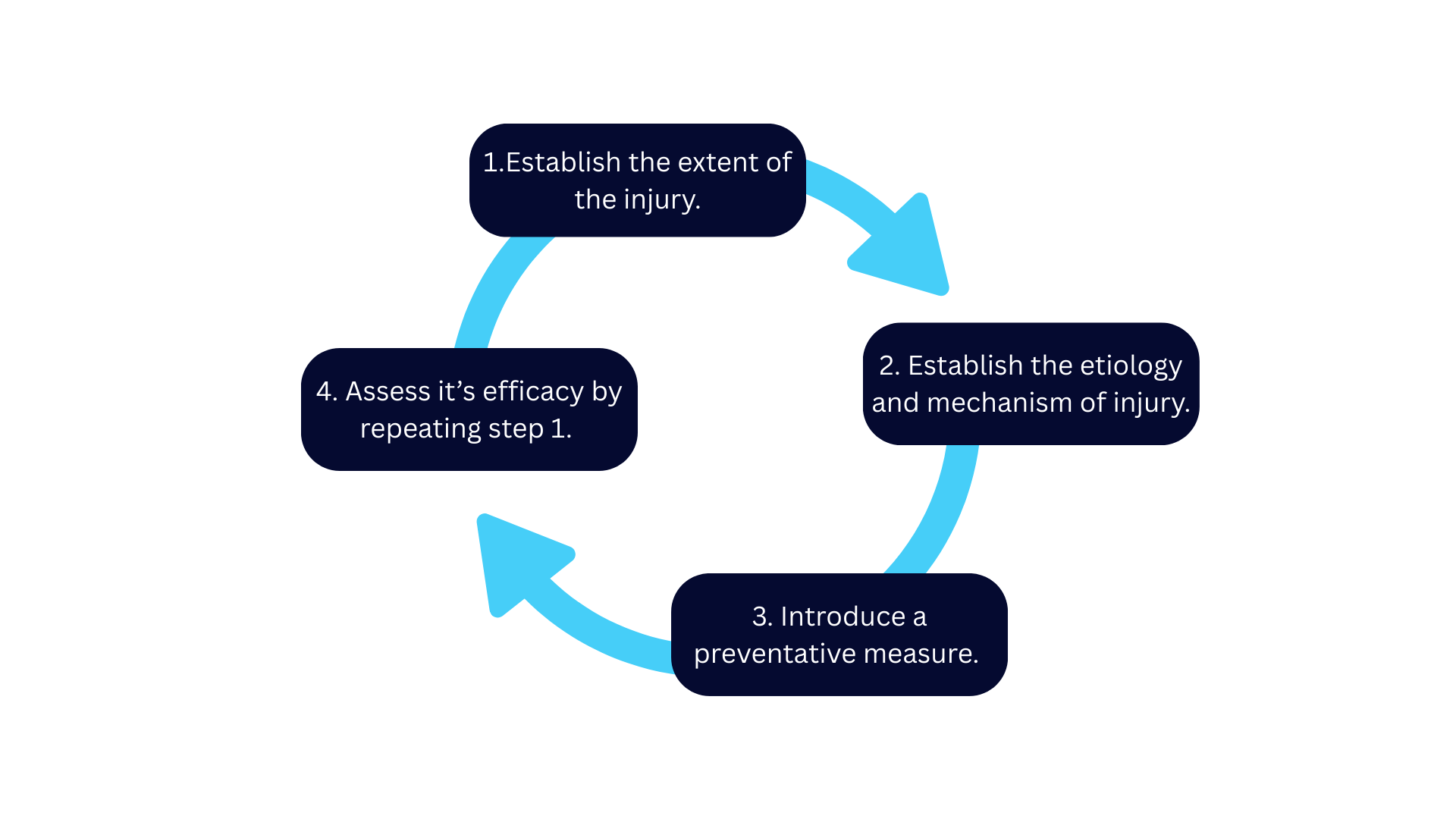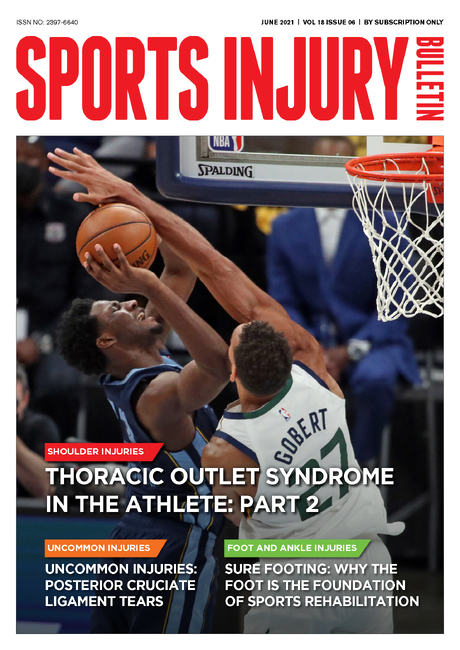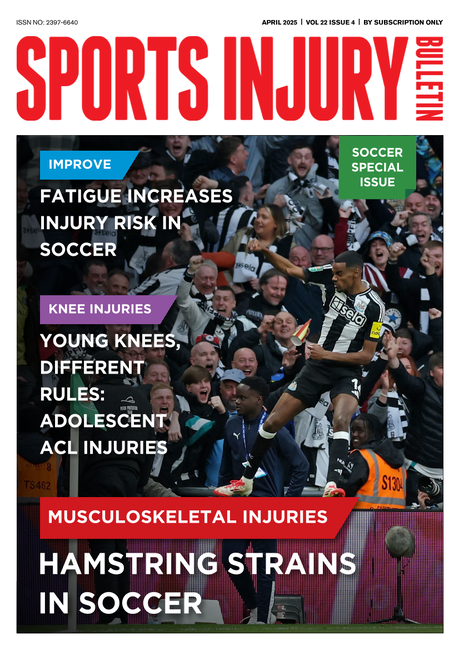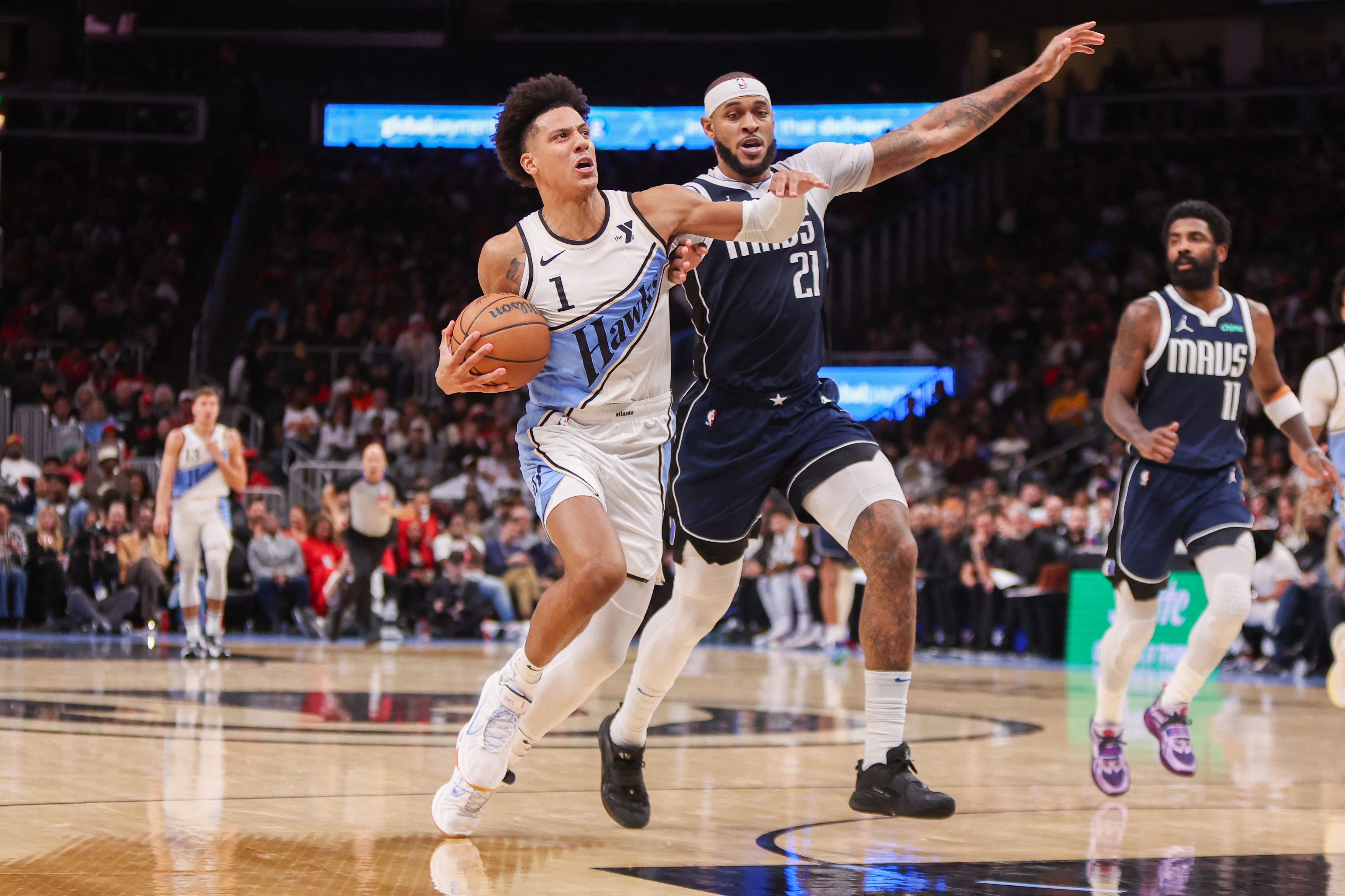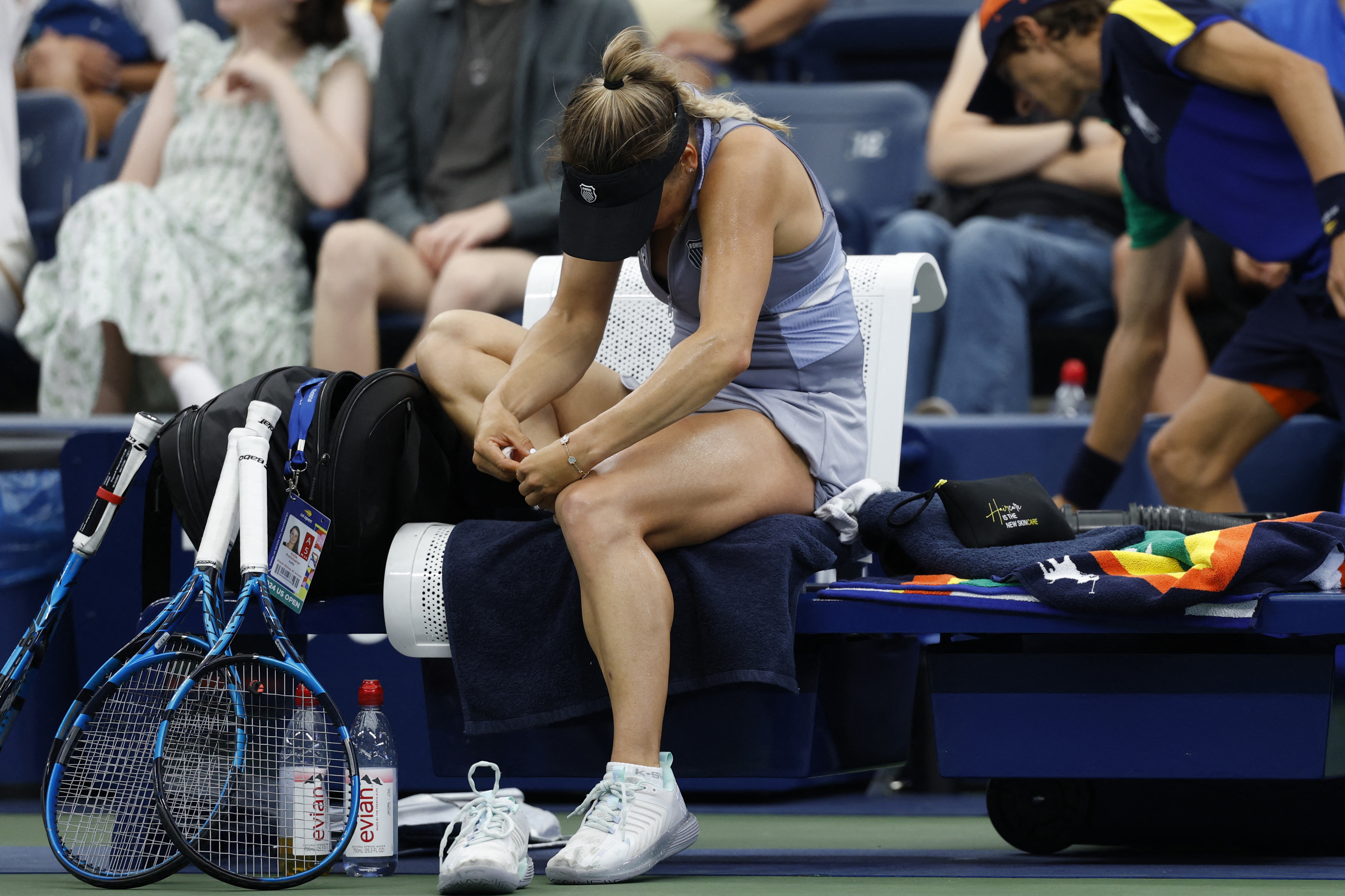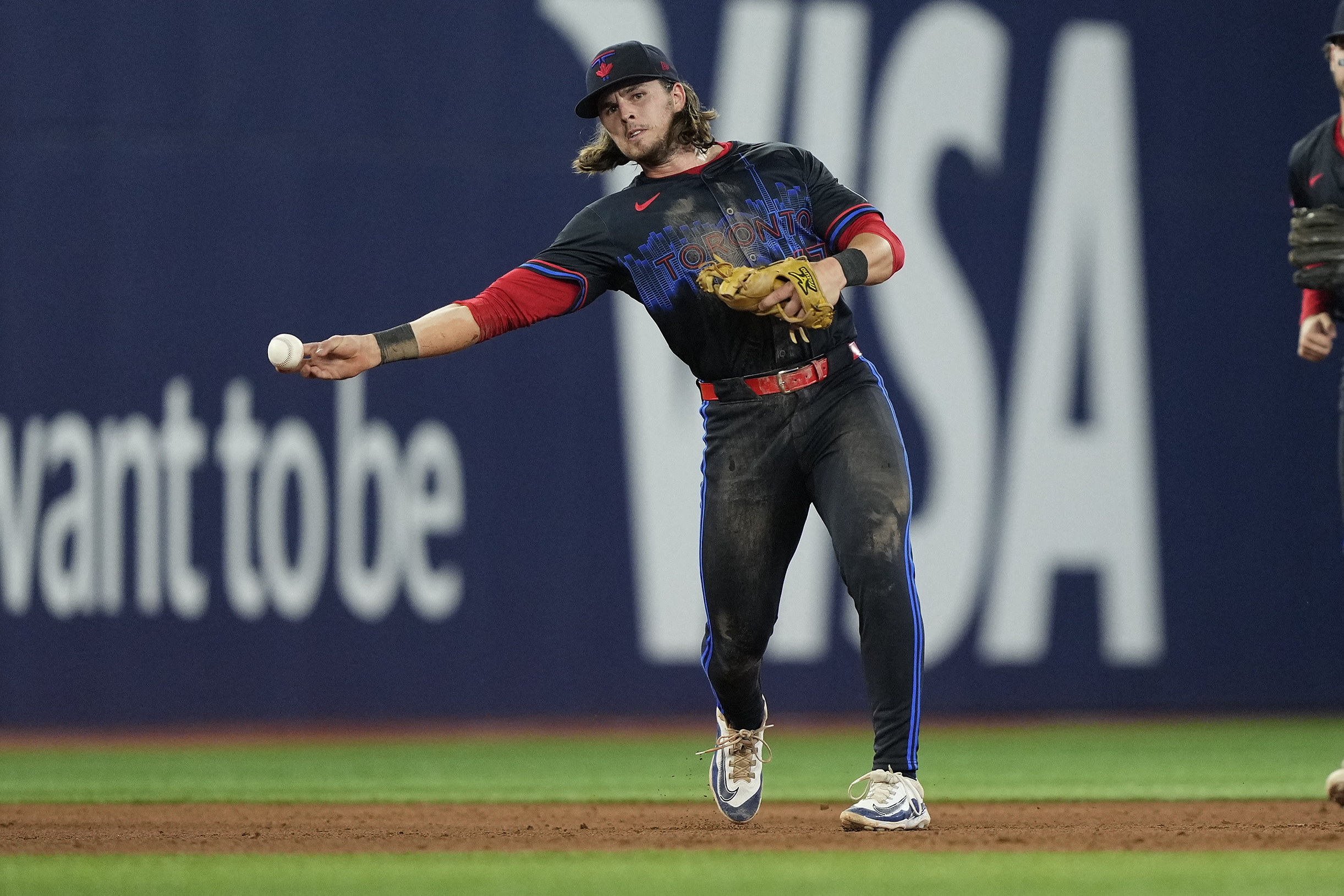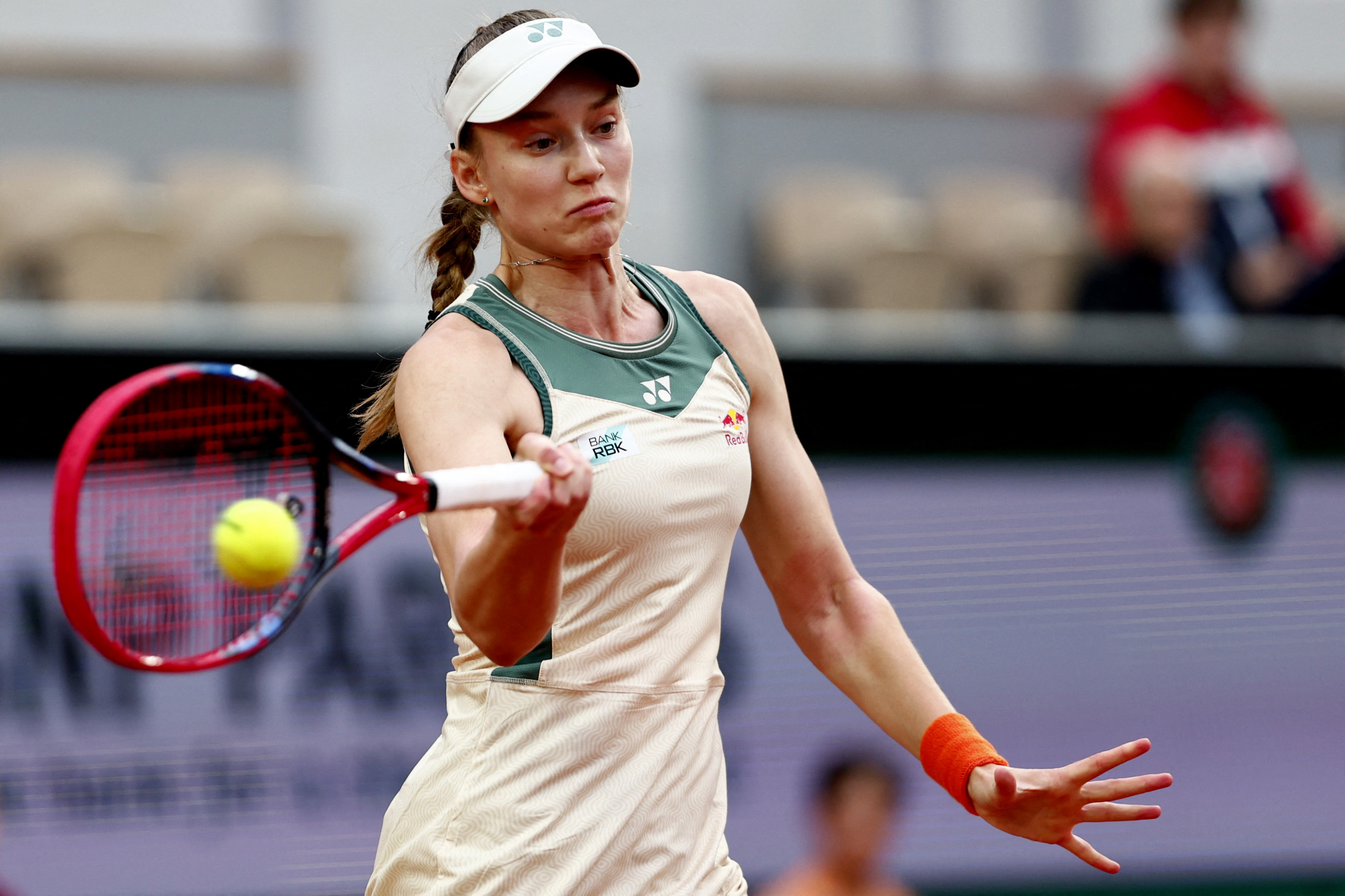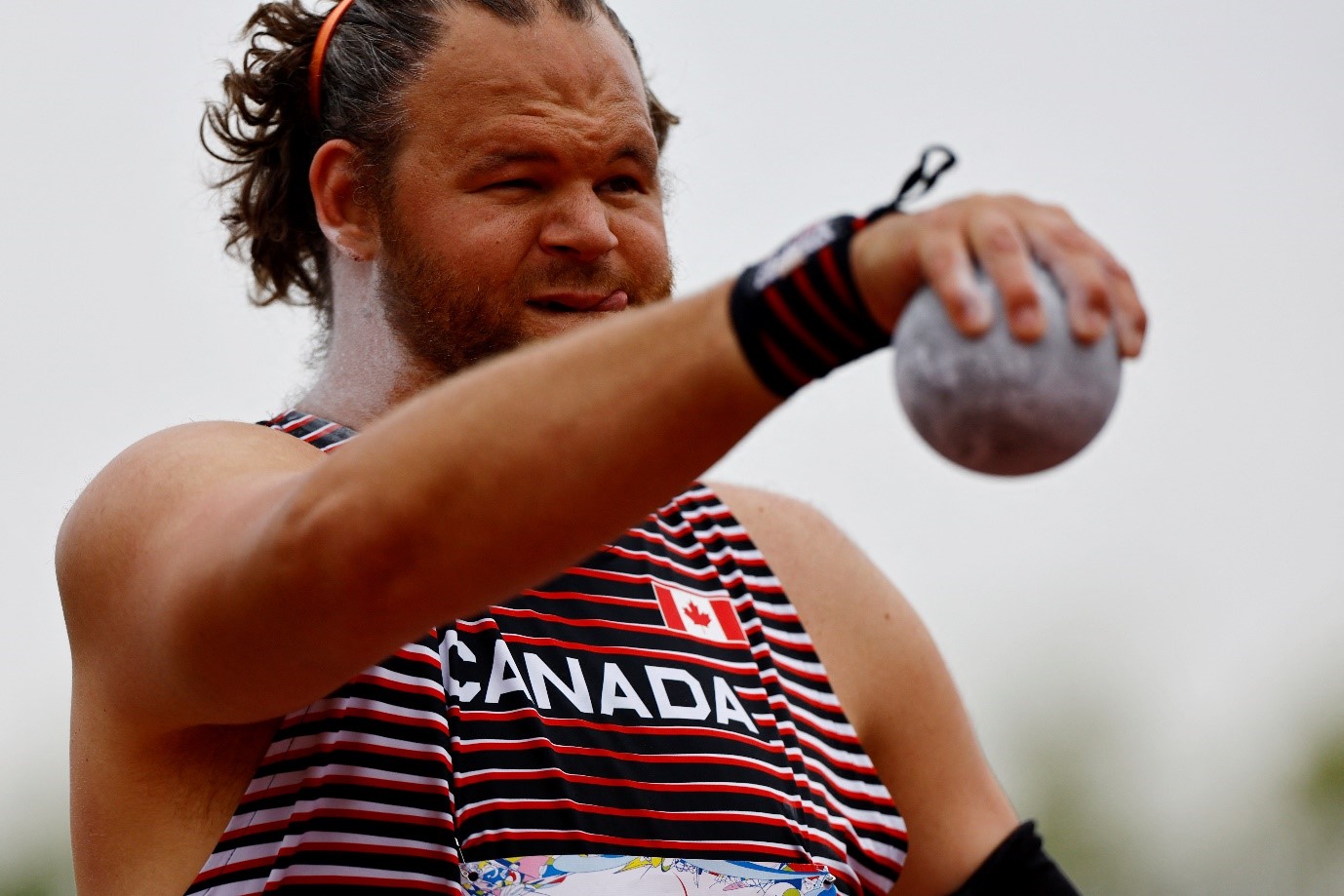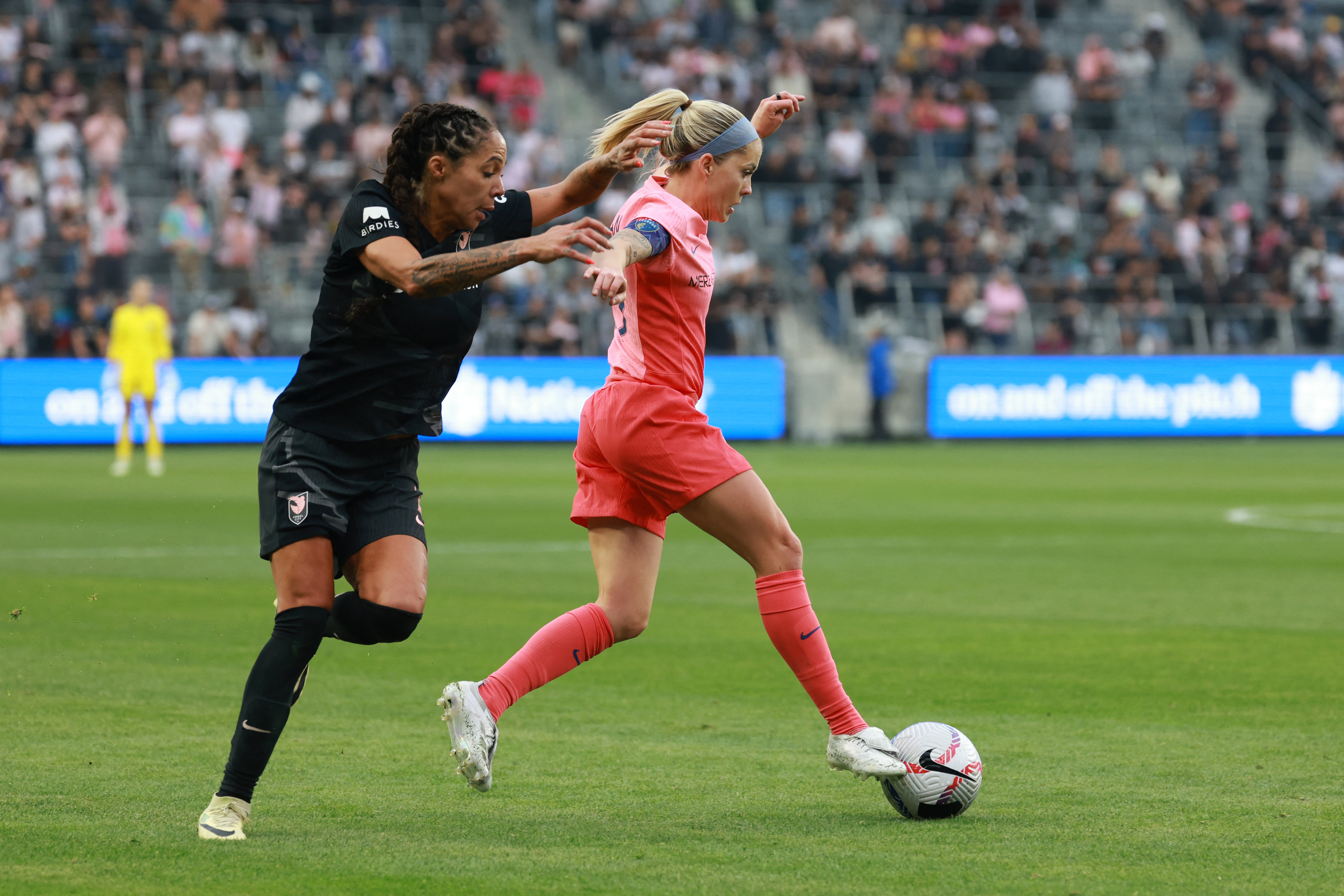You are viewing 1 of your 1 free articles
Hamstring Strains in Soccer
Hamstring injuries account for roughly 24% of all soccer injuries. Joshua Smith examines the causes, recovery, and injury prevention strategies associated with HSIs in soccer.
Portugal’s Eduardo Quaresma in action with England’s Omari Hutchinson Action Images via Reuters/Andrew Boyers
A player is 2.5 times more likely to sustain a hamstring strain injury (HSI) than a quadriceps injury, and the incidence of HSIs in training and matches has increased annually since 2001(1–3). To address the chronically high injury rate, clinicians must audit the injuries that are taking place. Then, they can understand the extent of the problem and establish the etiology and mechanisms before introducing preventative measures (see figure 1)(4).
Definitions
Training Team training session under the supervision of coaching staff. Match Competitive or friendly match against another team. Injury Physical complaint sustained during training or a match that resulted in the player being unable to take full part in future training or matches. Severity The number of days the player is unable to train or play between the injury date and the date of clearance for return to play. Recurrent injury
Injury of the same type and the same site as a previous injury. Early recurrence Recurrent injury that occurs within 2 months after full return to play. Injury incidence Number of injuries per 1000 player hours. Injury severity Minimal 1-3 days. Mild 4-7days. Moderate 8-28 days. Severe >28 days.
Number of injuries per 1000 player hours. Researchers from Linköping University in Sweden found that the incidence of match-related HSIs was stable between 2001/2002 and 2013/2014, with the training injury incidence increasing annually by 4%. From 2014/2015 until 2021/2022, the incidence and burden of HSIs sustained during training and matches increased significantly. Further analysis indicates alarming increases from 12% in 2001/2002 to 24% in 2021/2022, with the overall increase over 21 years being 19%. Additionally, HSIs accounts for 14% of total layoff days, with a median duration of 13 days (ranging from 7 to 22 days). The injury incidence for matches is 10 times higher than that of training. Finally, 18% of all the HSIs are recurrent, and 69% occur early post-return (see table 2).
Once clinicians establish the extent of HSIs, they must identify the risk factors and injury mechanisms to implement preventive programs. They can divide the risk factors into two categories: primary and recurrent factors. The primary risk factors are then subdivided into non-modifiable and modifiable(5). Non-modifiable primary injury risk factors include age, previous injury history, ethnicity, competition level, and the latest periods of matches. The modifiable risk factors are the player’s hamstring muscle strength imbalance ratio and the player’s health education(2,6).
“The incidence of hamstring strain injuries continues to rise…”
Injury Risks
Chronological age impacts the likelihood of sustaining an HSI(6). Starting at age twenty, the likelihood of injury increases by 1.3 times every year, regardless of previous injury history. Previous non-hamstring-related injuries are also a risk factor for a primary HSI, with links to anterior cruciate ligament reconstruction and a history of osteitis pubis(2). Furthermore, players of African ethnicity have an increased anterior pelvic tilt when compared to their caucasian compatriots, increasing their primary injury risk(2,7). Finally, the level of competition and the latest periods of soccer matches increase the primary HSI risk. This is due to the increased physical demands and match exposure time with decreased training and recovery. For example, 50% of all the match HSI occur during the last 15 minutes of each half(2,3,8).
The hamstring-to-quadriceps ratio indicates a player’s injury risk. Unbalanced ratios mean the quadriceps will overpower the hamstrings and result in injury(9). Traditionally, a ratio of 0.6 to 1 is ideal. However, some clinicians argue that a 1:1 ratio is preferential due to the hamstring’s eccentric strength requirements when providing knee-joint stability(2,10). Player health education is essential when looking to promote internal health control and pain awareness, as players predisposed to HSI may lack health literacy, ignore physical, and psychological consequences of persisting through pain(6).
A history of injury increases the risk of sustaining another injury. For example, players with a previous HSI have 2-3 times the risk of sustaining another injury(11). Clinicians consider this when aiming to minimize injury risks. Inadequate rehabilitation and change in optimal muscle length are modifiable risk factors. If athletes return to sports prematurely, they are at risk of reinjury. Therefore, clinicians must ensure that they are appropriately conditioned to meet the demands of their competition level and consider changes in the length-tension relationship before clearing athletes to return(2).
Injury Mechanism
Running/sprinting is the most common mechanism of HSI (61%), especially during matches (see table 2). The hamstrings are most vulnerable during the terminal swing phase, as they work to eccentrically decelerate the swinging tibia and control knee extension as the player shifts into foot strike(3,8).
Table 2: Hamstring injury characteristics(3)
| Category | Median/Percentage |
| Lay-off days | 13 |
| Injury severity | |
| Minimal | 8% |
| Mild | 19% |
| Moderate | 57% |
| Severe | 15% |
| Injury mechanism | |
| Running/sprinting | 61% |
| Stretching | 5% |
| Overuse | 12% |
| Other | 22% |
| Recurrences | |
| Recurrent injuries | 18% |
| Early recurrent | 12% |
Injury is an Opportunity
Once an athlete sustains an HSI, rehabilitation must begin immediately to ensure the player’s timely return to play. Clinicians can use several interventions, but their implementation must be carefully considered and individualized to minimize setbacks and reinjury after clearance, while maintaining performance at the same level. The injury-healing process is an opportunity to review the athlete in their entirety(12).
- The Askling L-Protocol (see table 3)
The Askling L-protocol is more effective than conventional exercises. It comprises exercises that load the hamstrings during extensive lengthening, mainly during eccentric muscle actions, and shorten the average time to return to play from 51 to 28 days(13). - The Sherry and Best Protocol
The Sherry and Best Protocol consists of progressive agility and trunk stabilization exercises and is more effective than programs that focus on isolated hamstring stretching and strengthening, with the significantly lower rate of reinjury being attributed to improved neuromuscular control and limited end range tension of the hamstrings(14).
Table 3: The Askling L-Protocol
| Exercise | Position | Action | Frequency |
| The Extender | The player holds and stabilizes the thigh with the hip flexed to 90°. | Perform slow knee extensions, pain-free. | Twice a day, three sets with 12 repetitions. |
| The Diver | Start from an upright position. | Performed as a simulated dive – hip flexion of the injured standing leg and stretching of the arms forward. Knee at 10-20° in standing leg and 90° in lifted leg. | Once every other day, three sets with six repetitions. |
| The Glider | Trunk upright, with one hand holding onto a support and legs split slightly. All body weight should be on the heel of the injured leg with approximately 10-20° flexion in the knee. | Glide backward on the non-injured leg, stopping before pain. Return to the starting position using your arms and not the injured leg. | Once every three days, three sets with four repetitions. |
Progressive running is an incredibly important intervention in a player’s gradual return to play due to its fundamental role in soccer performance (see figure 2)(15). A 3-stage protocol begins once a player can walk with minimal pain, progressing from 25% of maximal speed to 50% of maximal speed, pain-free. Once this is achieved, they must shift into stage two, which involves building up to 80% of maximum speed, pain-free. The final stage sees the player progress from 80% to 100% maximal speed. Once this is completed, practitioners should individualize the running exposure based on the player’s running profile, positional requirements, and tactical model demands(15).
“Once an athlete sustains an HSI, rehabilitation must begin immediately…”
The first cone to the second cone is a gradual build-up; the second to the third is the maximum speed for each range, and the third to the fourth is the deceleration phase.
Prevention
Injury prevention programs can decrease the rate of HSIs. The FIFA 11+ decreases the risk of HSI. However, compliance determines the program’s success(16). The program should be completed 2 – 3 times/week throughout the season, in conjunction with other warm-ups that allow for greater variety and are more soccer-specific to improve compliance, reduce staleness, and maximize injury prevention benefits(16,17).
Nordic hamstring exercises improve hamstring eccentric strength, enhancing overall knee health and reducing HSI rates(18). It is essential to note that these exercises are complex, and beginners should start with smaller ranges of motion (ROM), progress to assisted NHE, and ultimately, achieve unassisted NHE with full ROM (see table 4).
Table 4: Nordic hamstring exercise progressions(18)
| Week | Sessions per week | Sets | Repetitions |
| 1 | 1 | 2 | 5 |
| 2 | 2 | 2 | 6 |
| 3 | 3 | 3 | 6-8 |
| 4 | 3 | 3 | 8-10 |
| 5+ | 3 | 3 | 12,10,8 |
Practitioners must also consider high-speed running exposure as a protective strategy from HSI. For example, Portuguese researchers have demonstrated that introducing near-maximal sprinting speed (MSS) on matchday (MD) -2 is protective against HSIs(19). Exposure to near-MSS is crucial during training and rehabilitation, as players may not be exposed to sufficiently high speeds during the training week. Furthermore, eccentric strengthening programs do not recruit higher levels of muscle recruitment. From a practical perspective, players need to sprint over at least a 30m distance to reach near-to-MSS. Exposures should take place on MD-2 and must be greater than 95% effort. Practitioners must adjust the training week to place near-MSS exposures on MD-2, ensuring that players do not train on MD-2 with residual fatigue, which would put them at risk of injury.
Conclusion
The incidence of hamstring strain injuries continues to rise, and clinicians must be aware of the risk factors and available preventive strategies. Once an athlete enters the rehabilitation process, clinicians must consider returning them with robust physical qualities to minimize the risk of reinjury. Furthermore, when administered in a structured and periodized manner in response to a well-conducted injury audit, player health education can reduce players’ internal risk and, therefore, their injury predisposition.
References
- Br J Sports Med. 2015 Oct;49(19):1241–4.
- Joints. 2019 Sep;07(03):115–26.
- Br J Sports Med. 2023 Mar;57(5):292–8.
- Br J Sports Med. 2005 Jun;39(6):324–9.
- Br J Sports Med. 2014 Jun;48(11):929–38.
- Front. Sports Act. Living. 2024 Jun 14;6:1377045.
- RIS. 2025 Mar 4;33(2):129–45.
- Clin Sports Med. Fourth. Aus: McGraw-Hill; 2014.
- J Athl Train. 2001 Dec;36(4):378–83.
- Sports Med - Open. 2019 Dec;5(1):11.
- Br J Sports Med. 2020 Sep;54(18):1081–8.
- Retraining the injured athlete. In: High-performance training for sports. Champaign, IL: Human Kinetics; 2014. p. 85–96.
- Br J Sports Med. 2013 Oct;47(15):953–9.
- J Orthop Sports Phys Ther. 2004 Mar;34(3):116–25.
- J. Athl. Train. 2022 Feb 1;57(2):125–35.
- Br J Sports Med. 2024 Jul;58(13):701–8.
- BMJ Open Sport Exerc Med. 2023 Apr;9(2):e001463.
- IJHMSS. 2024 Jul;12(4):692–8.
- Biol. Sport. 2023;40(4):1057–67.
Newsletter Sign Up
Subscriber Testimonials
Dr. Alexandra Fandetti-Robin, Back & Body Chiropractic
Elspeth Cowell MSCh DpodM SRCh HCPC reg
William Hunter, Nuffield Health
Newsletter Sign Up
Coaches Testimonials
Dr. Alexandra Fandetti-Robin, Back & Body Chiropractic
Elspeth Cowell MSCh DpodM SRCh HCPC reg
William Hunter, Nuffield Health
Be at the leading edge of sports injury management
Our international team of qualified experts (see above) spend hours poring over scores of technical journals and medical papers that even the most interested professionals don't have time to read.
For 17 years, we've helped hard-working physiotherapists and sports professionals like you, overwhelmed by the vast amount of new research, bring science to their treatment. Sports Injury Bulletin is the ideal resource for practitioners too busy to cull through all the monthly journals to find meaningful and applicable studies.
*includes 3 coaching manuals
Get Inspired
All the latest techniques and approaches
Sports Injury Bulletin brings together a worldwide panel of experts – including physiotherapists, doctors, researchers and sports scientists. Together we deliver everything you need to help your clients avoid – or recover as quickly as possible from – injuries.
We strip away the scientific jargon and deliver you easy-to-follow training exercises, nutrition tips, psychological strategies and recovery programmes and exercises in plain English.
